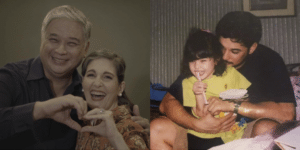“For me, peace is being able to go outside and play,” said 8-year-old Saber, a student of Haji Salik Kalaing Elementary School in Barangay Tukanalipao, Mamasapano, Maguindanao. I had to have a moment and excused myself from the kid, lest my vulnerability toward such an answer show, and a crying fit confuse him even more.
An emotional volunteer was the last thing he needed.
The team was on the third day of the July 2015 Mamasapano Peace Mission. The children had been grouped by grade level for various activities and games that focused on peace as the theme. To join the mission, my friend and I—both from our organization’s chapter in Cebu City—had to fly to Davao and then travel by land for five hours in a van.
I have lived in the city for eight years now. I read the news and watch it on a daily basis, so it was different to hear our brothers and sisters in Mamasapano talk about the conflicts firsthand. It was difficult to watch some of them shed tears while recalling their experience as civilians—unarmed, unprotected and helpless—in the midst of constant gunfights in the area. They said their young ones flinched at the mention of the word “gun” and ran away or cried at the sight of any armed man in uniform.
They said conflicts among armed groups regardless of who they were and who they represented had left them fearing for their lives almost every day. They said the sounds of gunshots had traumatized the children, who have less to begin with.
Of the Mamasapano incident last January, a father told us of bullets hitting the family home and the trees surrounding it from dawn until noon. “I saw a different kind of fear in my children’s eyes,” he said.
Based on what 8-year-old Saber told me, the children of Mamasapano understand peace as something very simple. The dreams of their parents, as these were eagerly shared with us, are full of hope, and a stereotyping public isn’t going to make their road to peace any easier so that these dreams will be realized.
Our ignorance makes us turn a blind eye to their real plight. They need compassion; all they want is to live in peace and keep their families safe from harm.
Returning later to Cebu, where it is quite crowded but fairly peaceful, and seeing everything to which I have access, I cannot forget the war-torn communities in Mindanao and the bridges of peace that some people have been tirelessly trying to build there no matter the risks.
But I heard that they were building another bridge of peace—unseen but tangible—in Mamasapano. After the visible (and better) “Harmony Bridge” is completed, it will be sturdy and its name will serve all, and it will let every one of our brothers and sisters there make their way across regardless of status, gender, group and religion.
April Agnes Galado, 27, is a volunteer in the Teach Peace, Build Peace Movement (https://www.teachpeacebuildpeace.org/).


